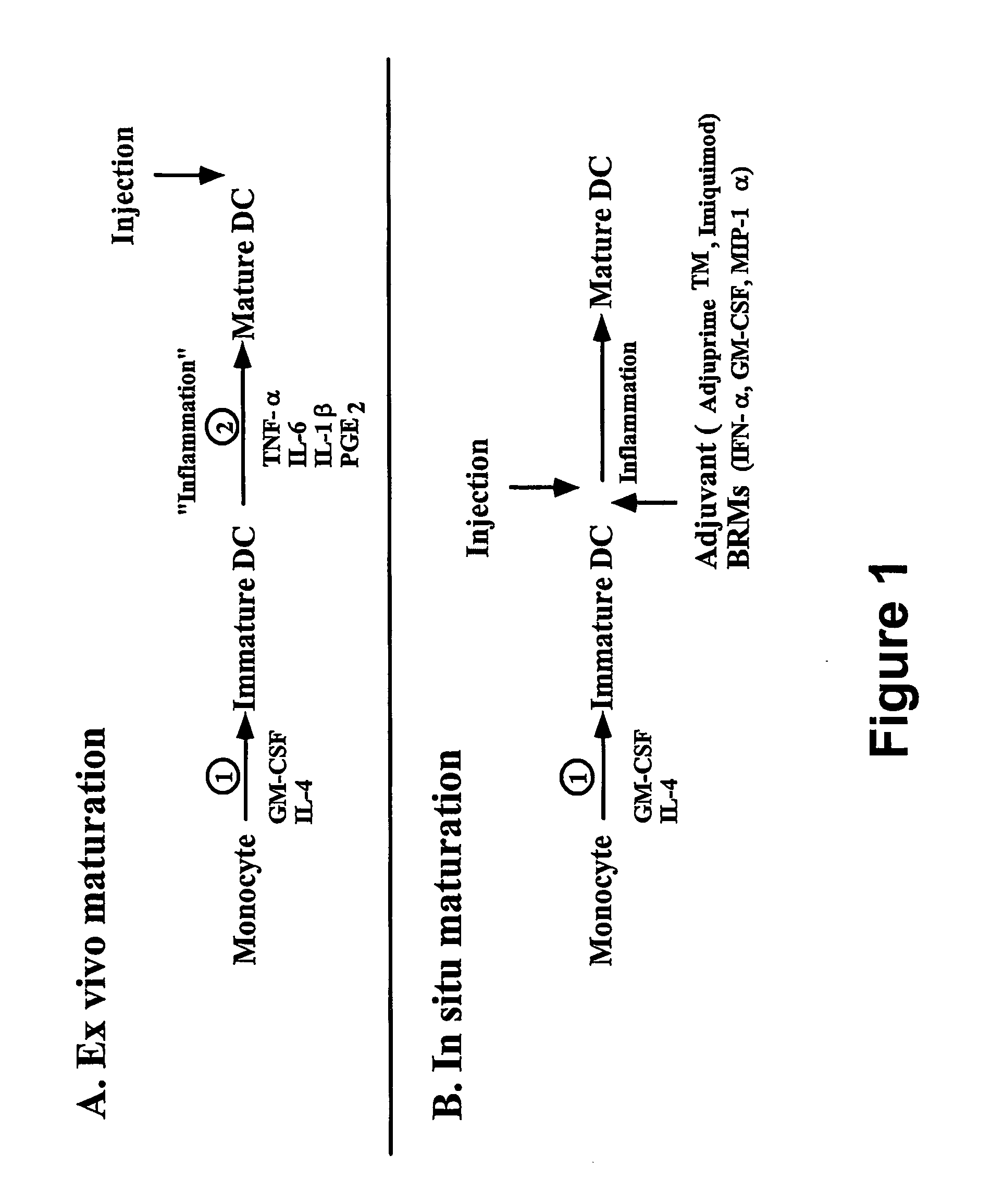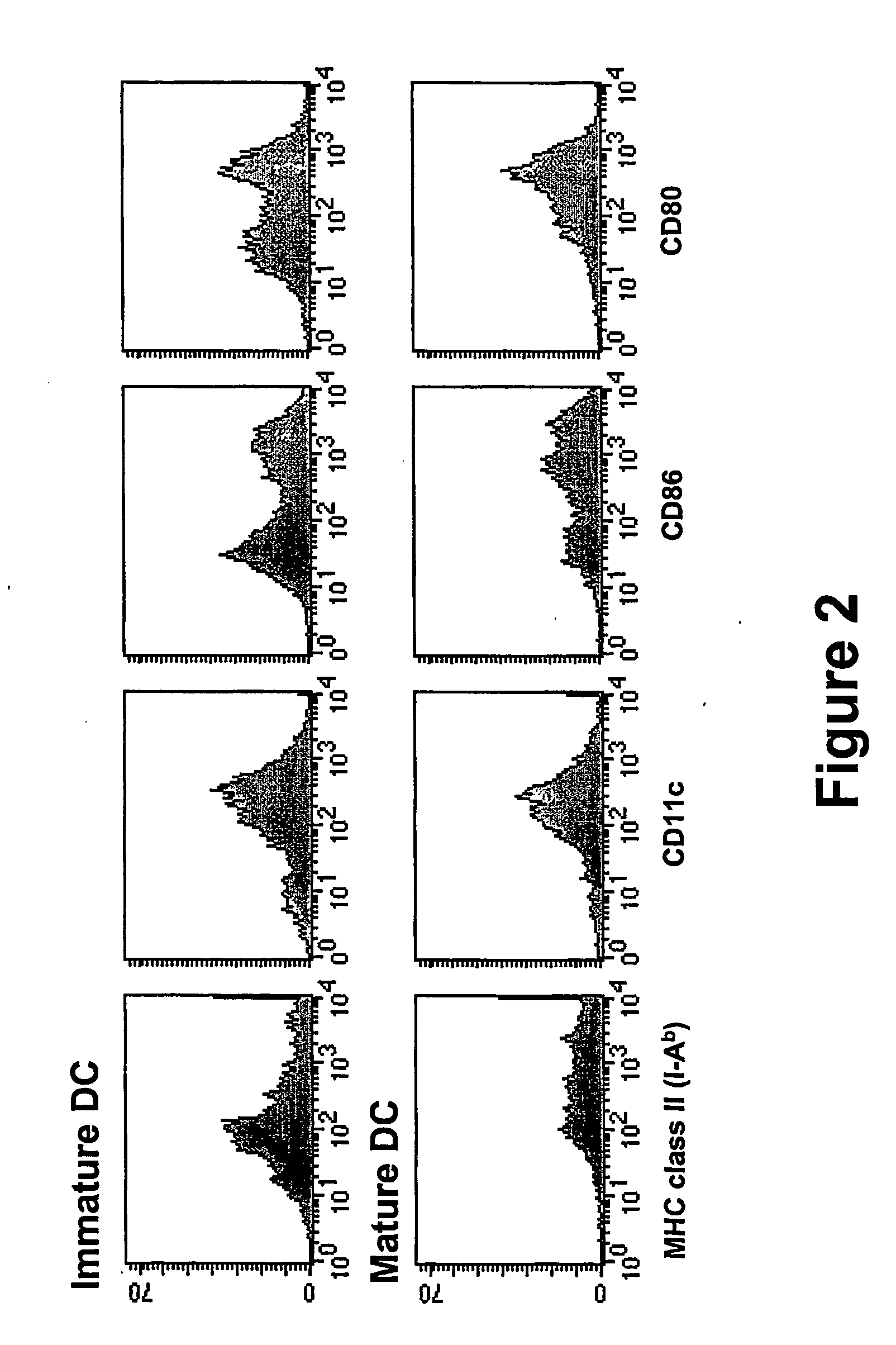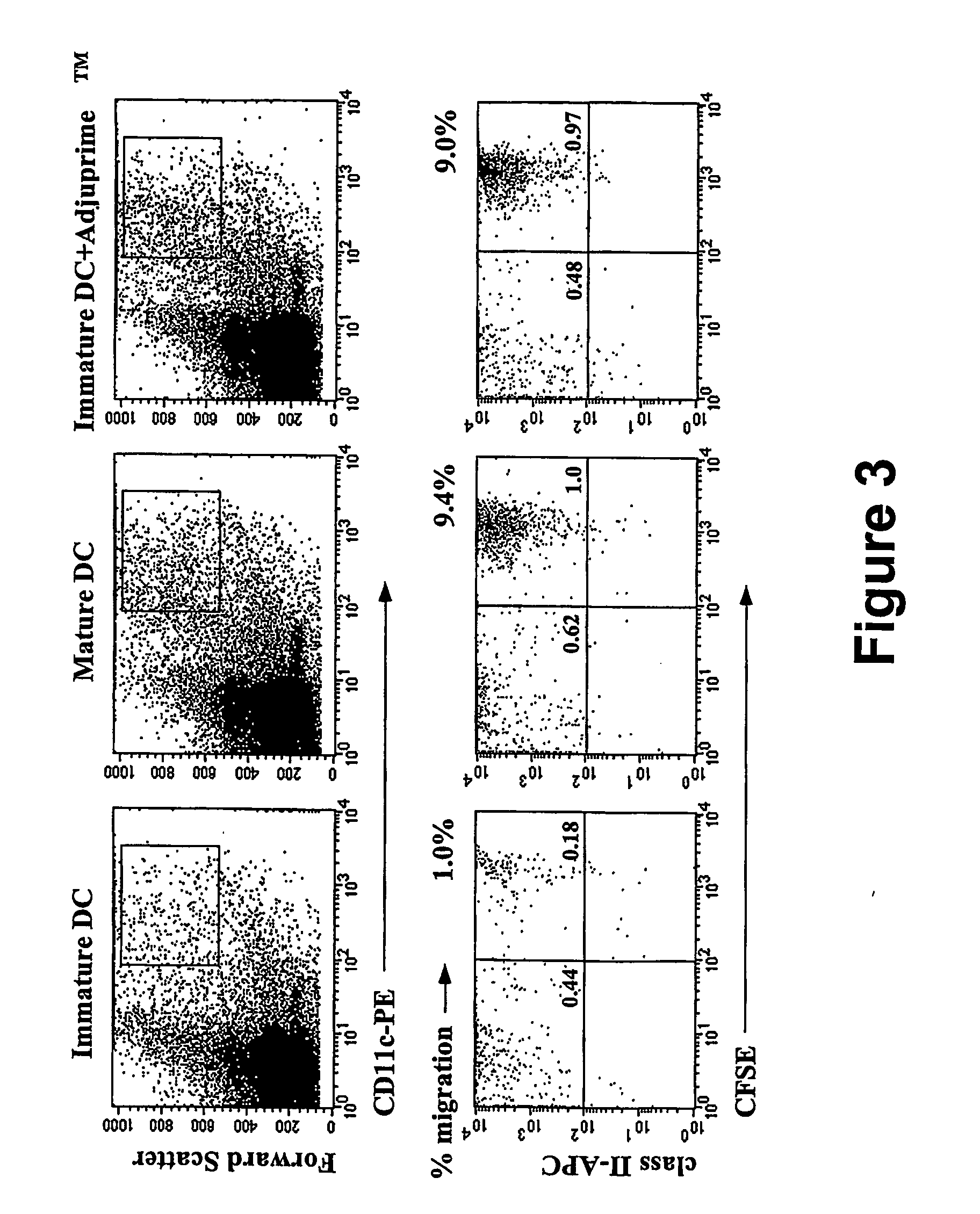In situ maturation of dendritic cells
a dendritic cell and in situ technology, applied in the field of immune response elicitation in subjects, can solve the problem of faithful recapitulation of maturation agents in vitro
- Summary
- Abstract
- Description
- Claims
- Application Information
AI Technical Summary
Benefits of technology
Problems solved by technology
Method used
Image
Examples
example 1
Procedure for DC Generation
[0148] Marrow from tibias and femurs of C57BL / 6 mice were harvested followed by treatment of the precursors with ammonium chloride Tris buffer for 3 min at 37° C. to deplete the red blood cells. The precursors were plated in RPMI-5% FCS with GM-CSF (15 ng / ml) and IL-4 (10 ng / ml). GM-CSF-containing supernatant was harvested after 24 h capillary culture from GM-CSF producing melanoma cell line (F10.9 / GM-CSF) and IL-4 was obtained from Peprotech (Rocky Hill, N.J., United States of America). The concentration of GM-CSF used was determined by ELISA. Cells were plated at 106 / ml and incubated at 37° C. and 5% CO2. Three days later the floating cells (mostly granulocytes) were removed and the adherent cells replenished with fresh GM-CSF and IL-4 containing medium. For immature dendritic cells, non-adherent cells were harvested on day 5, electroporated or untreated and replated at 106 / ml in GM-CSF and IL-4 containing medium. For mature dendritic cells, non-adheren...
example 2
Immunophenotype of Murine Bone Marrow Derived DC
[0149] Immature DC were generated from the bone marrow of mice by a 6 day culture in the presence of GM-CSF and IL-4 using established protocols (see Inaba et al., J Exp Med 176:1693-702, 1992) with slight modifications (see Mitchell et al., Eur J Immunol 28:1923-33, 1998; published erratum appears in Eur J Immunol 28:3891, 1998) and either loaded with mRNA encoding the chicken ovalbumin (OVA) model antigen or replated and allowed to grow for another 24 hours after which the non adherent cells, the mature DC, were collected, and transfected with OVA mRNA. RNA transfections were carried out by electroporation. See e.g., Van Tendeloo et al., Blood 98:49-56, 2001; Saeboe-Larssen et al., J Immunol Methods 259:191-203, 2002. Antigen loaded immature or mature DC were injected into the ear pinna and mice were evaluated for (a) migration of the DC to the draining auricular lymph node or (b) induction of OVA CTL.
[0150] Immature DC were inject...
example 3
Measurement of OVA-Specific CTL
[0152] To measure the induction of OVA CTL, splenocytes were isolated 7-8 days post injection with the DC, cultured for 5 days in the presence of OVA mRNA transfected DC and assayed for the presence of OVA-specific CTL using a standard cytotoxicity assay. See e.g. Volgmann T, Klein-Struckmeier A, Mohr H., “A fluorescence-based assay for quantitation of lymphokine-activated killer cell activity”, J Immunol Methods (1989) 119:45-51.
PUM
| Property | Measurement | Unit |
|---|---|---|
| volume | aaaaa | aaaaa |
| concentrations | aaaaa | aaaaa |
| molecular weight | aaaaa | aaaaa |
Abstract
Description
Claims
Application Information
 Login to View More
Login to View More - R&D
- Intellectual Property
- Life Sciences
- Materials
- Tech Scout
- Unparalleled Data Quality
- Higher Quality Content
- 60% Fewer Hallucinations
Browse by: Latest US Patents, China's latest patents, Technical Efficacy Thesaurus, Application Domain, Technology Topic, Popular Technical Reports.
© 2025 PatSnap. All rights reserved.Legal|Privacy policy|Modern Slavery Act Transparency Statement|Sitemap|About US| Contact US: help@patsnap.com



